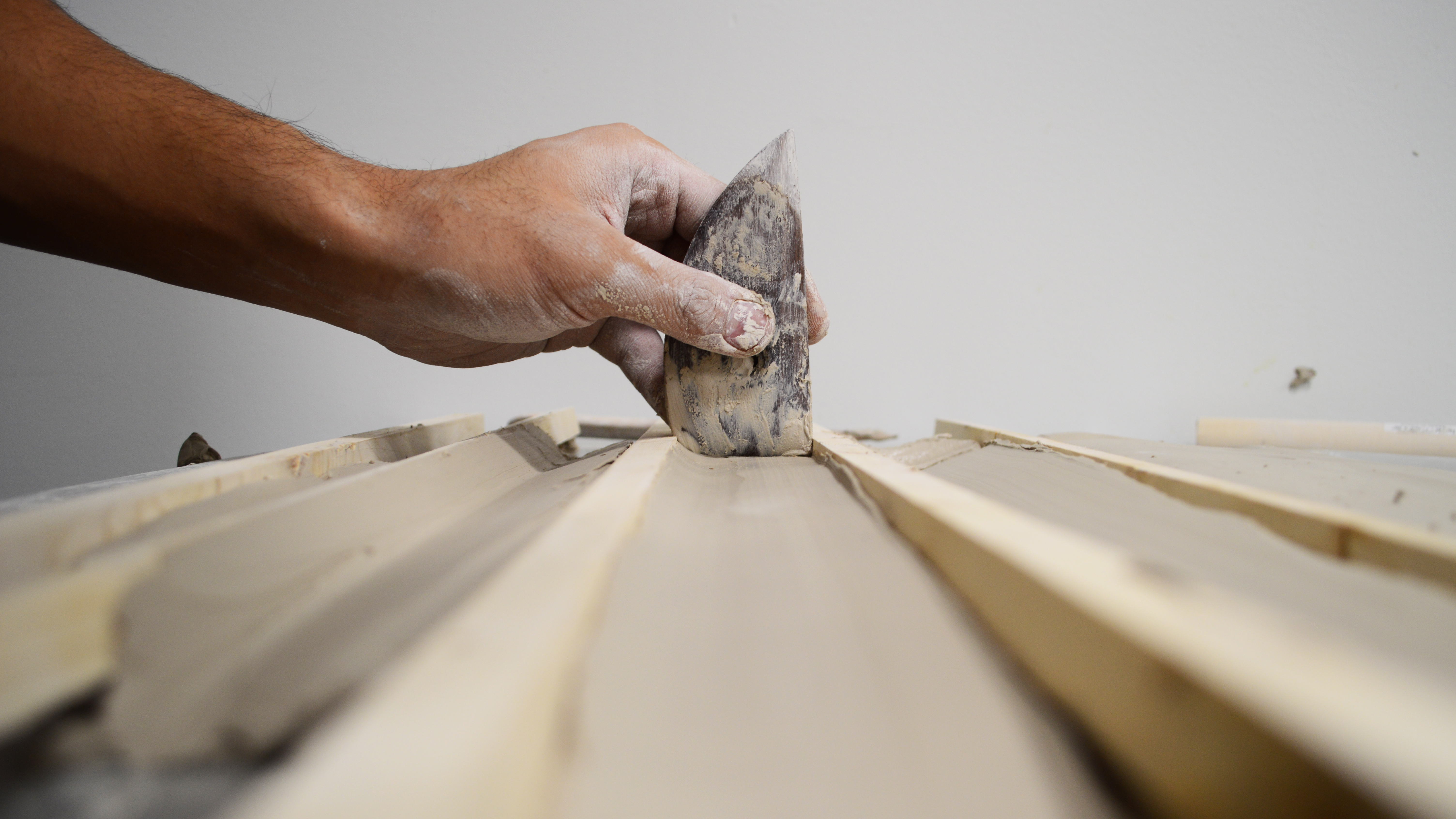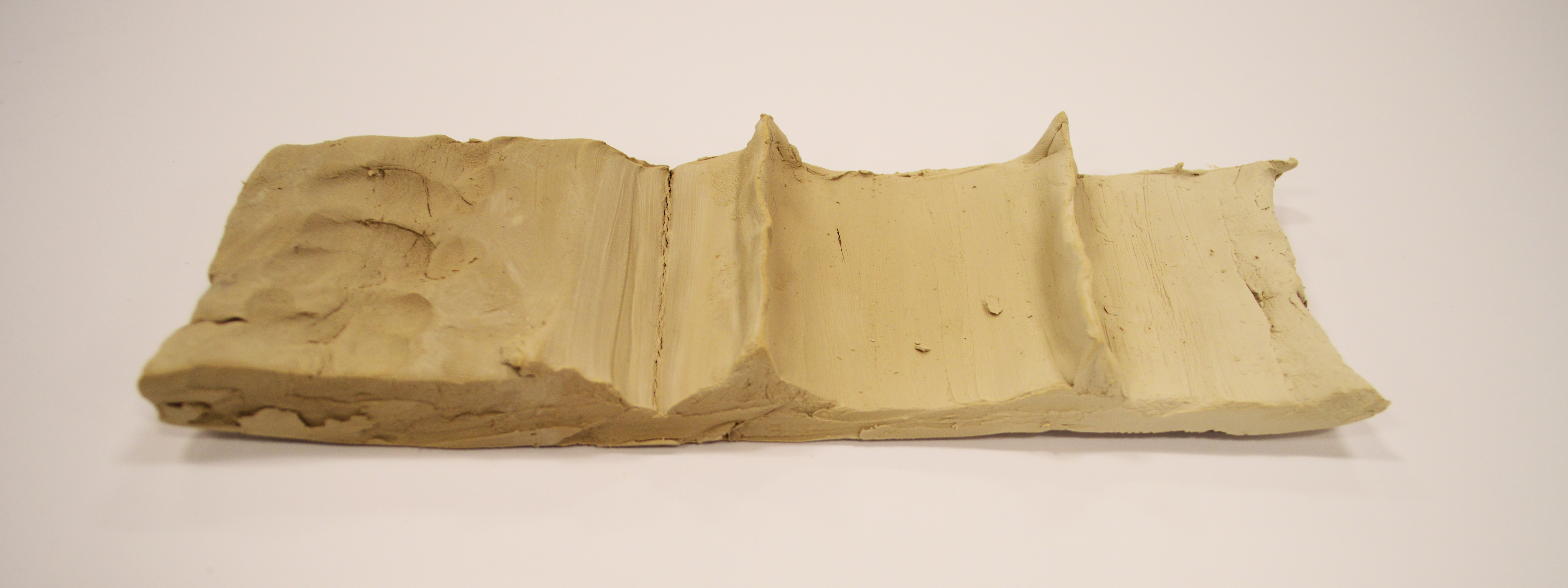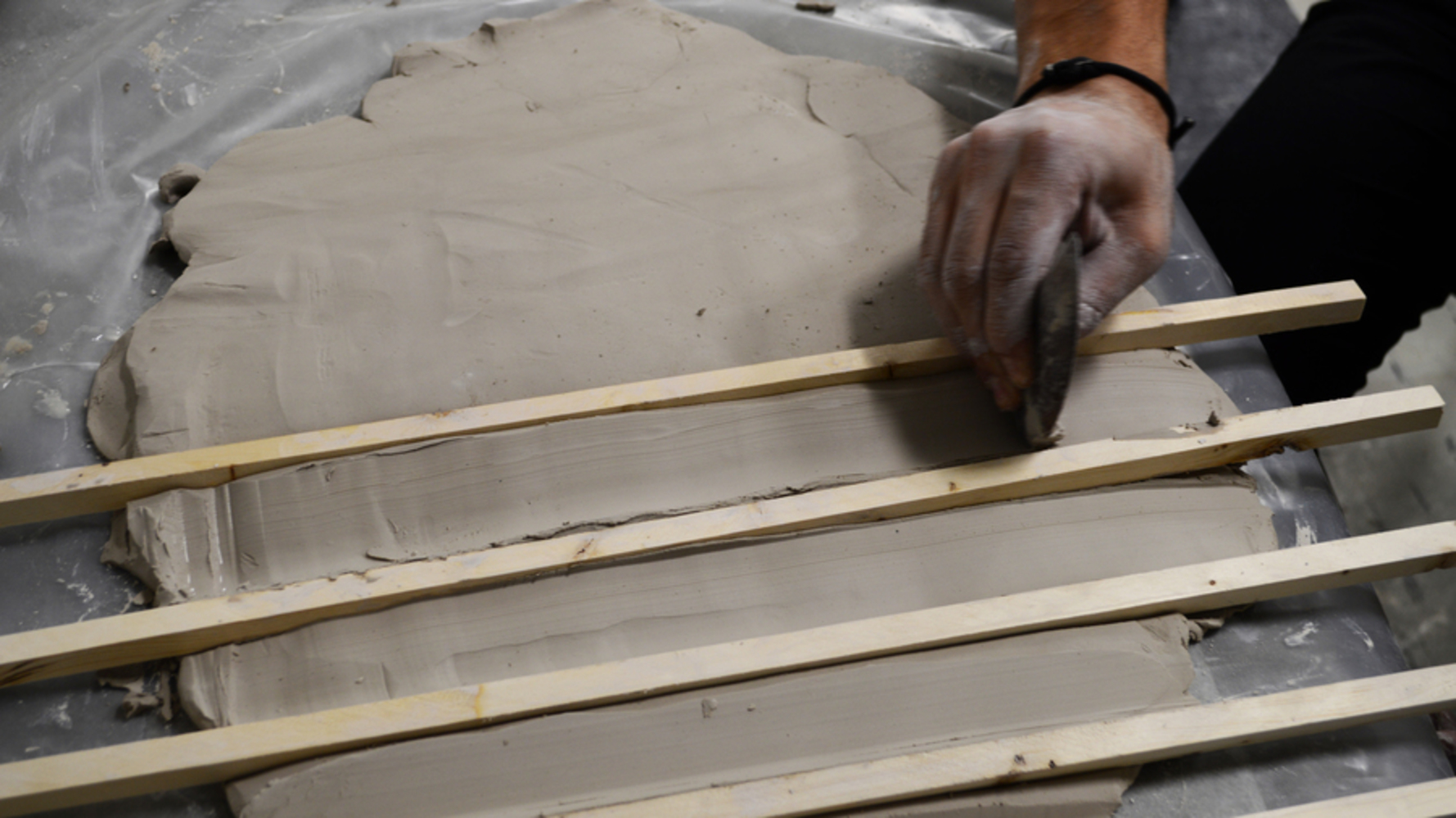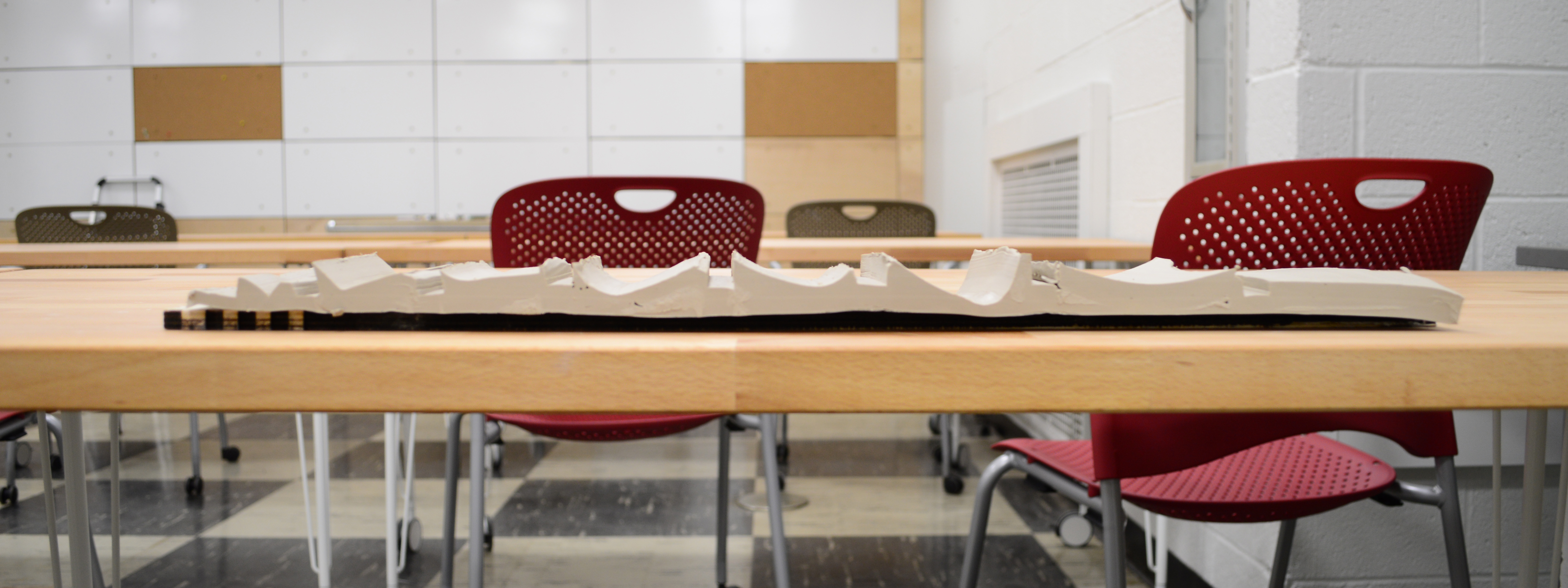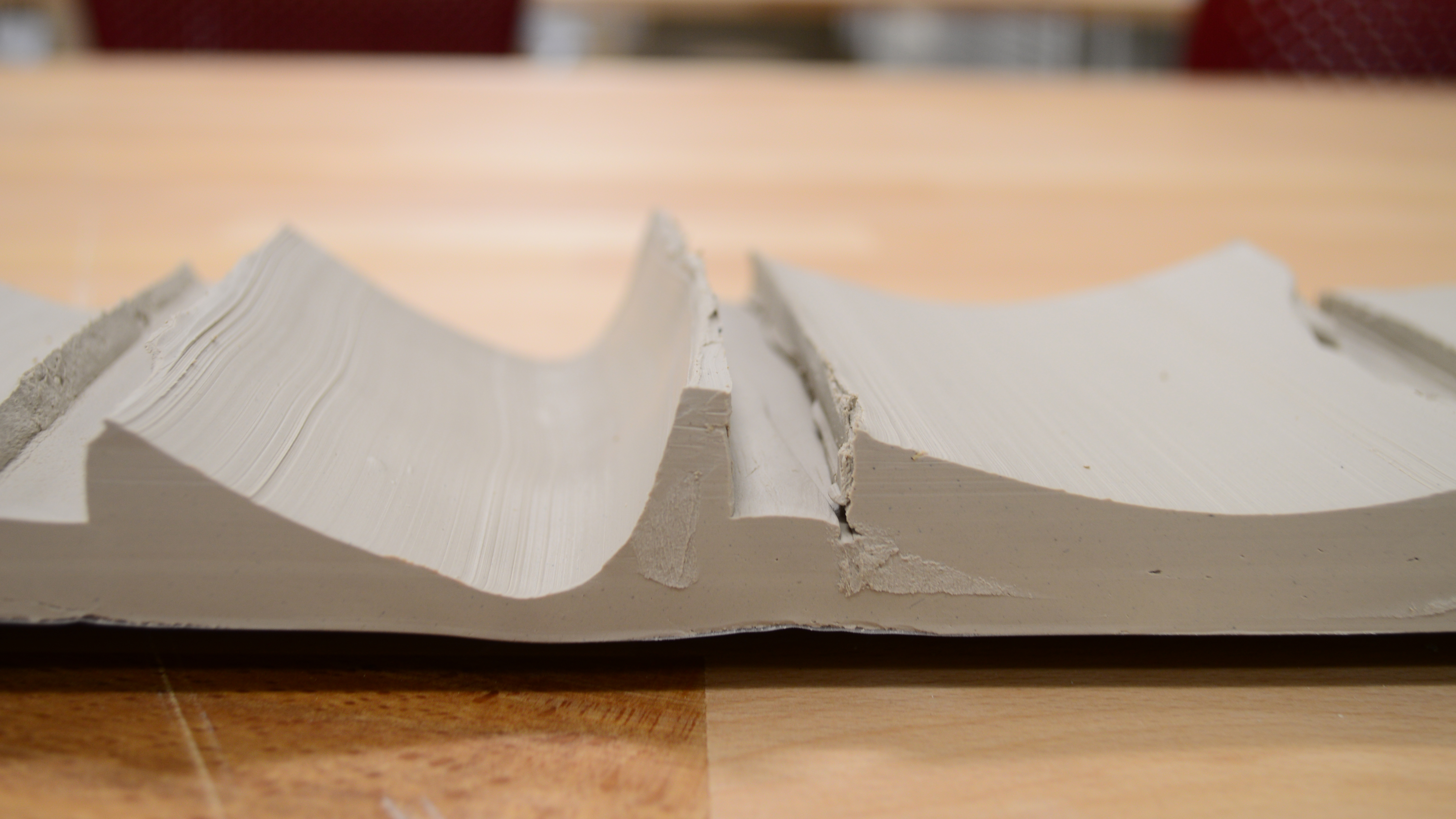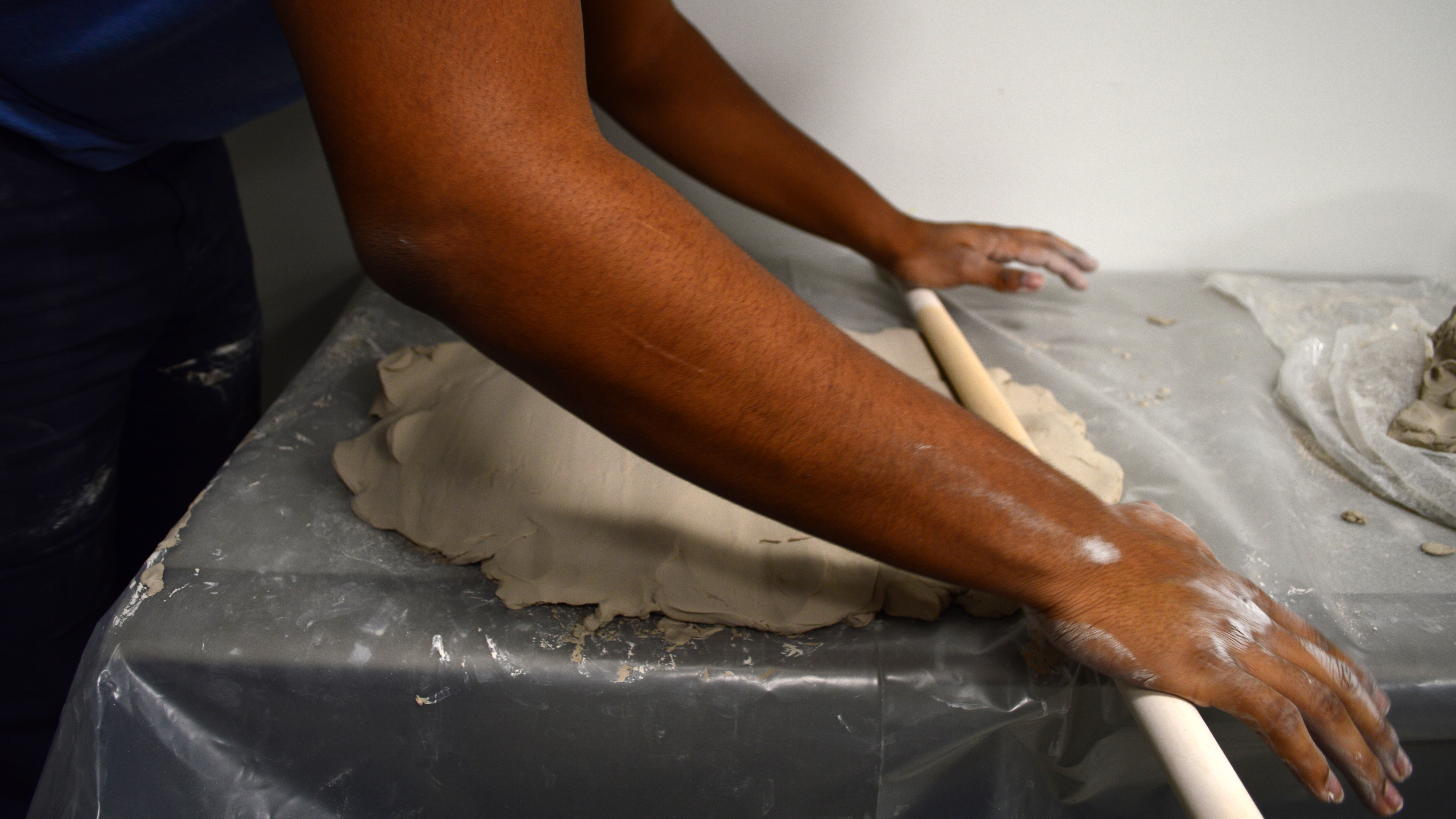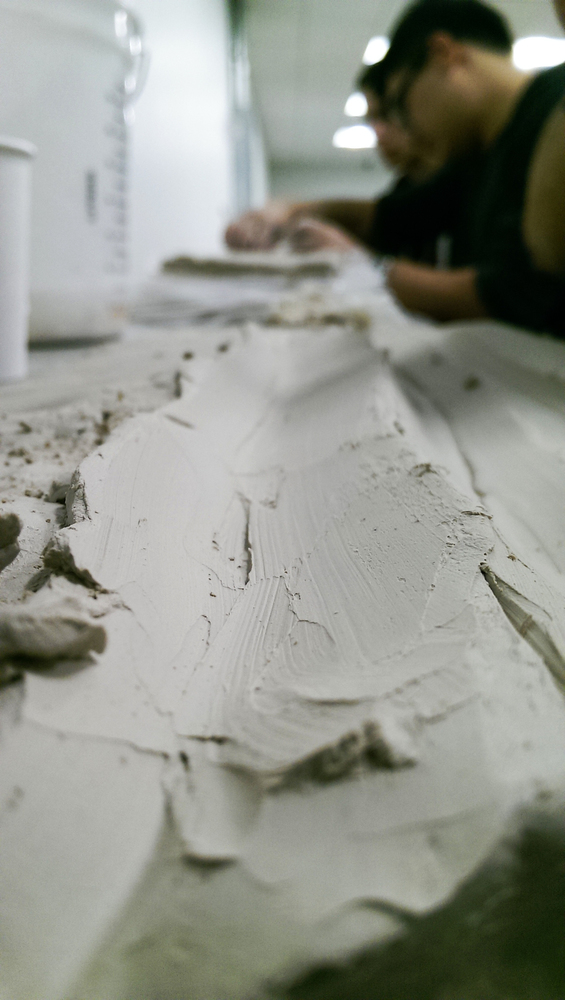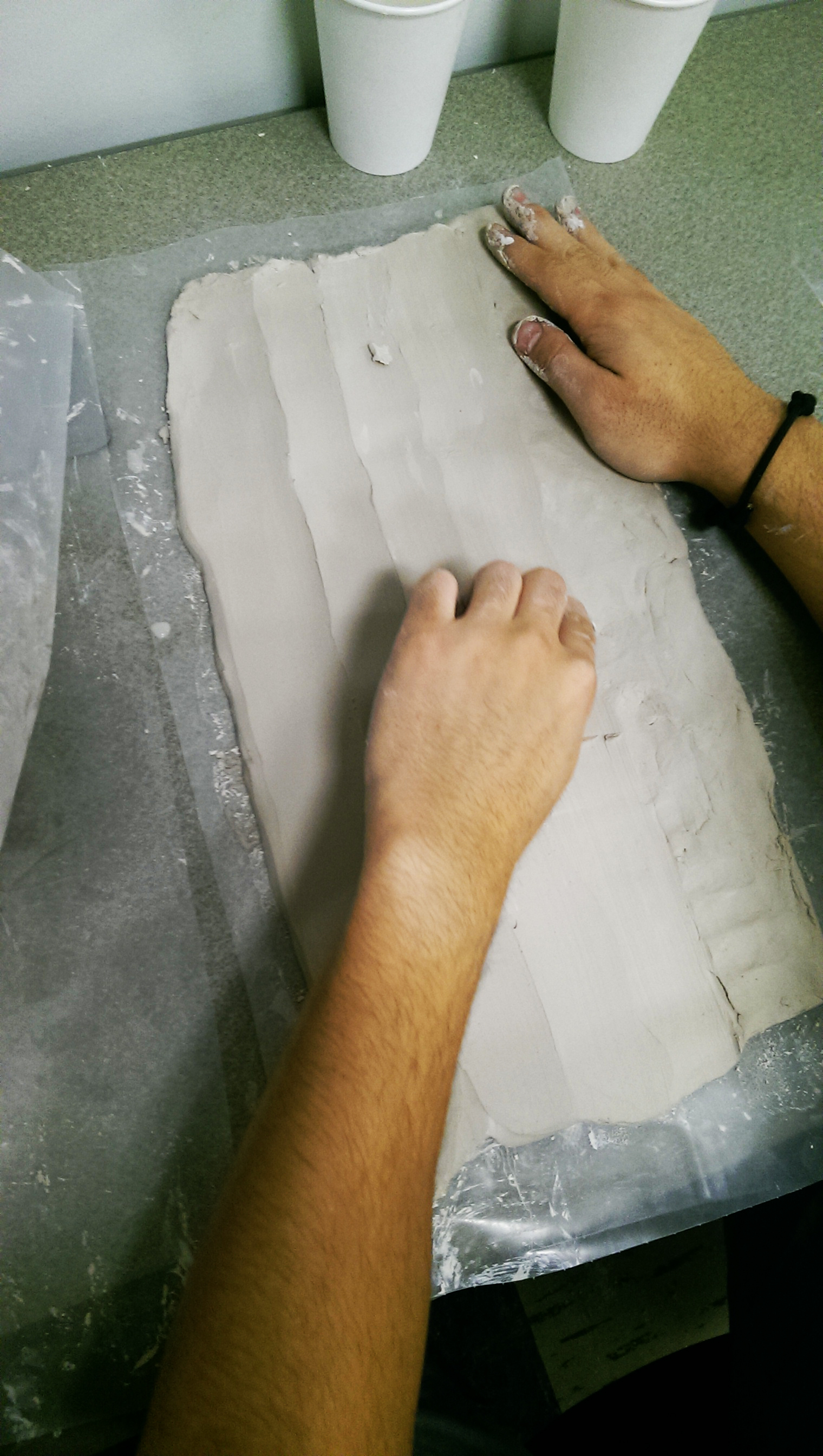So first a little background on the potter's rib.
Outcome
The potter's rib is a wooden clay working tool. It is usually used for forming pots on a spinning wheel. It comes in a variety of shapes and the most common potter's rib (pictured above) is usually shaped like a shark's tooth, with a two straight edges and one curved edge. The reasoning behind the form is that it is intended to be able to surface various shapes and profiles from cups to vases.
When we started this exploration we had our own expectations about the tool and we soon figured out that we were a bit ambitious. We wanted to create 'interesting' forms but the potter's rib is not a forming tool. On top of that, we also realized that in order to get some sort of 'form' from the tool, we had to remove a good amount of clay. We realized that we needed a new strategy. After brainstorming a bit, and making a few clay hamburgers and bricks, we were hooked on the idea of making forms that express the unique shape of the potter's rib. We began to go against some of the preconceived uses of the tool and we agreed that in order to express the form of this tool, we would need to scrape away clad from a base and create an undulating surface.
Taking on the task of forming something out of clay with only a Potter’s Rib (a surface smoothing tool) was definitely difficult. First, we tried to form a cylindrical 3D object, mimicking a static piece of clay on a wheel. That did not work out too well because we were moving the tool 360 degrees around the form, making our strokes inaccurate and wobbly. Working on a 3D form was definitely not an option and did not suggest anything about the tool taxonomy. We decided to move to a flat 2D surface and make arbitrary curves, varying the angles and ways we removed materials. This also did not yield any results because the clay is so soft, smooth, and unpredictable. We wanted to emulate exactly what the tool could do and to showcase the full potential of the tool. Normally on a wheel, the clay moves around the tool and creates a uniform shape according to the angle of the tool. We then decided to take these constraints and think of a way to fully capture the taxonomy of the tool. We stayed on a 2D surface and dug the tool into the clay with varying angles. From the very leftmost side to the very rightmost side of each angle, we placed wooden guides that would create a uniform width and allow us to keep a straight path of each angle. We stroked the tool through each guide and got a great representation of the abilities of the tool. We then cut out a section of the paths and that was very easy to see the possibilities of using the tool.
You can upload files of up to 20MB using this form.
